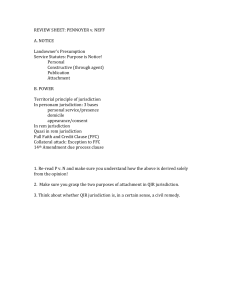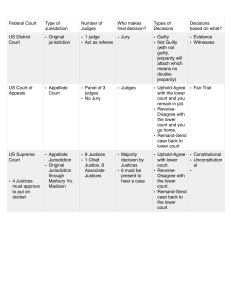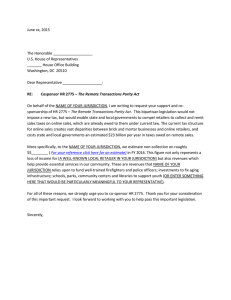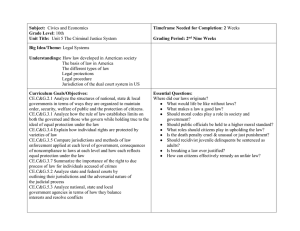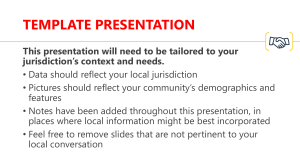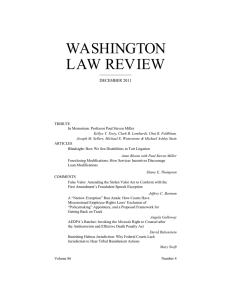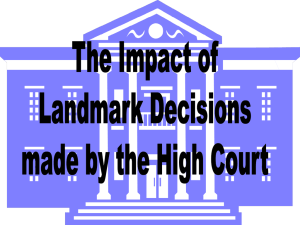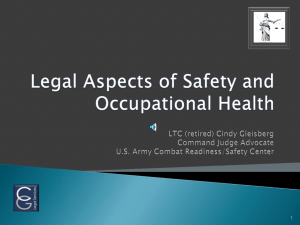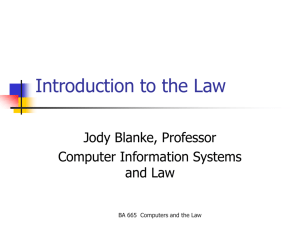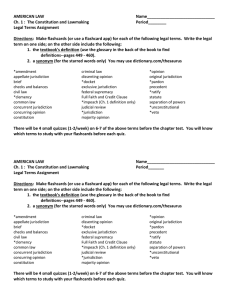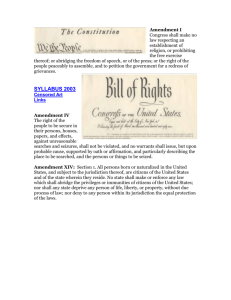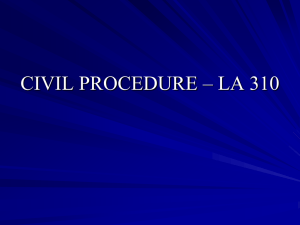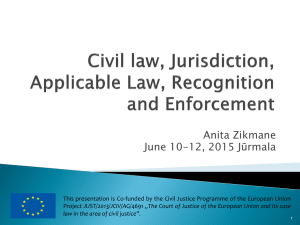9. The judiciary, part 1
advertisement
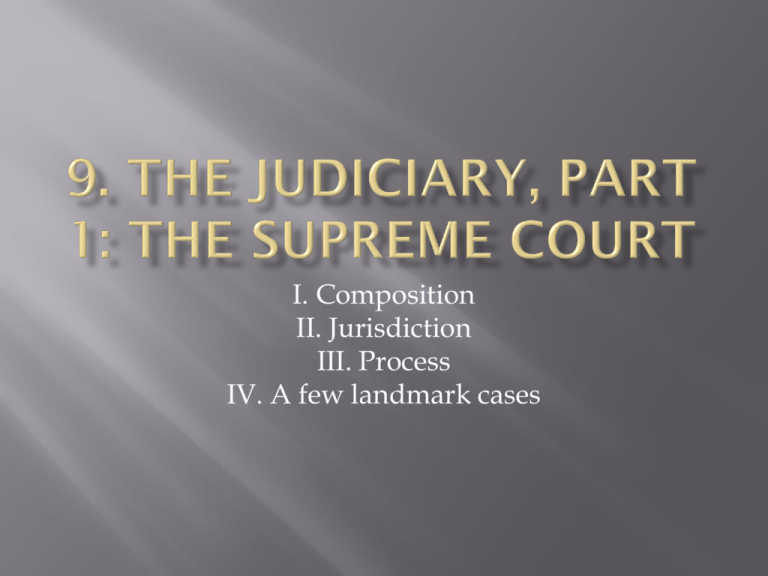
I. Composition II. Jurisdiction III. Process IV. A few landmark cases I. Composition -9 justices : the Chief Justice (J. Roberts) + 8 associate justices (S. Sotomayor, S.G. Breyer, S.A. Alito, E. Kagan, C. Thomas, A. Scalia, A. Kennedy, R.B. Ginsburg) The Roberts Court, Oct. 2010 FDR’s “Court-packing” scheme Law clerks Edwin Meese, Reagan’s Attorney General : “institutionalizing the Reagan revolution so it can’t be set aside no matter what happens in future presidential elections.” II. Jurisdiction -original jurisdiction -appellate jurisdiction -writ of appeal -writ of certiorari (“to make perfectly sure”) III. Process -on average: 5,000 cases a year, rules on about 200 -“oral arguments” -“counsels” -majority opinion -dissenting opinion -concurring opinion -“strict constructionists” VS “judicial activists” Alexis de Tocqueville: “Every political question in the US is ultimately a judicial one.” Solicitor General IV. A few landmark cases -Justice Powell 1979 “If the Congress chooses not to confront the president, it is not our task to do so.” -Marbury v. Madison (1803) -Fletcher v. Peck (1810), Martin v. Hunter’s Lessee (1816) -McCulloch v. Maryland (1819): implied powers -Dred Scott v. Sandford (1857) -Plessy v. Ferguson (1896): “separate but equal” -Korematsu v. United States (1944) -Brown v. Board of Education of Topeka (1954) -Miranda v. Arizona (1966): “Miranda rights” -Roe v. Wade (1973) -Bush v. Gore (2000) -Citizens United v. Federal Election Commission (2010) -National Federation of Independent Business v. Sebelius (2012): “Obamacare”





